
Hard Rock is now in its fourth edition. It would have been easy to consign this classic tome to history, says Rob Greenwood, but instead by including all new photography and a choice selection of new routes, Ian Parnell and Vertebrate have brought it back with a bang.
In 1974 Ken Wilson published the first edition of Hard Rock. Whilst I would love to give an impression of the impact it had on me at the time, I wasn't born for another 16 years and wouldn't start climbing for 29. That said, Hard Rock has an influence that transcends the generations, and it says a lot that it has continued to have an impact on a great many climbers to this day. This is a book that means something to people and, as a result, everyone has an opinion, whether that is about the routes, the writing, or the entire concept - flawed or fantastic. In light of this it's been a fascinating process to review, not only because it gave me a good chance to take another look at the book itself, but also its influence, origins, and how much - and to an extent how little - has changed in the intervening 46 years.
With that in mind it's hard to know quite where to begin, but here's the basic gist for those that don't want to read the following, lengthy review:
- The latest edition features an entirely new set of images, but the same set of essays as the original
- By and large it includes the same routes, but there are several exceptions, namely the two that fell down and the two that were aid climbs
- The two that fell down have received direct replacements, whereas the others have been written off in favour of a further eleven new routes from different areas across the country
Hard Rock - 1st, 2nd and 3rd Edition
I can't quite recall the exact moment I first came across Hard Rock, but I can remember the first time I delved into it properly. In 2006 I began work at Joe Browns, which provided me a bookshelf brimming with ideas. Up until that point I didn't have a great amount of climbing-based reading material, shy of a few personal guidebooks, so this really was a boon to my imaginative fires. Hard Rock, as well as Classic Rock, were a major part of this (as was Extreme Rock, but this came later on). Together these two publications opened my eyes not just to my local area, but introduced me to places I might not otherwise have known about, providing me with the perfect excuse (and necessary inspiration) to go visit them. Not only did it do that, but through the essays it added further depth with regards to the history of the route and the experiences other climbers had on it. As a result, by the time I came to climb a great many of these routes there was years of anticipation and excitement bottled up which, without either book, would never have been the same.
When it comes to the chosen routes - yes, a few do divide opinion, but you've got to remember that this selection wasn't made by committee: it was the work of one man and one man only, and that man was Ken Wilson. It's a shame that the great man isn't around today, as I have no doubt that he'd have a thing or two to say (and he'd likely say it loudly). As such, we can analyse the alternatives, and question the inclusions, but ultimately the list is something set in stone. There must have been something to it though, some magic, because countless climbers have continued to tick their way through it for the past 46 years. Under Ken's benevolent dictatorship he chose to guide us through a range of routes, crags and areas that spanned the length and breadth of the country. It was, and still is, far more than just a 'best of' selection of routes - it was an attempt to encapsulate all of the idiosyncrasies of traditional rock climbing within the UK in a single set of routes. And that's no mean feat! It's hard to imagine in the digital age, where information abounds with regards to climbing destinations, but back in 1974 Hard Rock must have been utterly eye opening.
Within its pages there were sea cliffs and mountain crags, outcrops and dales, slabs, walls, and overhangs; granite and gritstone, quartzite, rhyolite and gneiss. But this wasn't enough: the book had to encapsulate more than just areas and rock types, it had to take into account climbing's history and heritage too. As a result a gully was included as a tip of the hat to those pioneers who had delved deep into the wet and watery chasms*. Girdle traverses were included for much the same reason, as they too had played an important part in the development of modern rock climbing. Finally, Ken's curveballs: the aid climbs. The first, Kilnsey Main Overhang - the more conventional of the two; the second, The Scoop on Strone Ulladale, became the book's bogie route - the one Ken included to stop 'puerile tickers'.
*Whilst Raven Gully could be considered crap by modern standards, I can guarantee that it will provide a truly unforgettable, entertaining, and most likely wet outing…
Hard Rock - 4th Edition
So where does this leave us with the edition at hand? Is Hard Rock still relevant to the modern climber or is it now a mere curio from the past?
Without this edition I might have argued for the latter, but there shines a bright light from between its covers courtesy of the updated imagery and the inclusion of new routes which bring a new lease of life to it. The new edition has been compiled by Ian Parnell, and together with Vertebrate Publishing they have really pulled out the stops to make this a high impact affair, with no expense spared.
The photographs themselves are particularly stunning, with a great many full page pictures that showcase the route's pedigree (and lest we forget, it is the route - not the climber - that is supposed to be the star of Hard Rock). A good example of this is just a few pages in, featuring a climber (Paul Winder) battling their way up the corner/groove at the top of Engineer's Slabs. It looks totally out there, with jaw dropping exposure and a line that looks like it keeps going forever. I defy anyone to look at that photo and not be inspired, yet it is by no means in isolation - it is one of many. It's great to see so many pictures of women on the sharp end too, as I'm not sure the term 'diversity' or 'gender equality' had been invented when the original came out. It's good to see that put right in the latest edition. There do appear to be a few mistakes within the captions, which could irk you depending on your levels of perfectionism, but at the end of the day I'm just glad to have the book in my hands.
The cover shot, featuring an image of Mary Birkett on the Great Flake pitch on Scafell's superb Central Buttress, is everything you'd want a cover shot to be. The only minor (and majorly geeky) gripe I have with the cover is that it is the first to feature a route that is actually included within Hard Rock's pages. The 1st edition featured The Sloth (not included), the 2nd edition featured Shrike (again, not included) and the 3rd featured The Rasp (you guessed it - not included). I've always assumed this was Ken's way of subtly reminding us that whilst within the book's pages there are a great many good routes, there's plenty more out there. With that in mind, maybe a photograph of something like An Bealach Rúnda at Fair Head would have acted as a suitable alternative, but what does it matter - it's a great cover shot as it is.
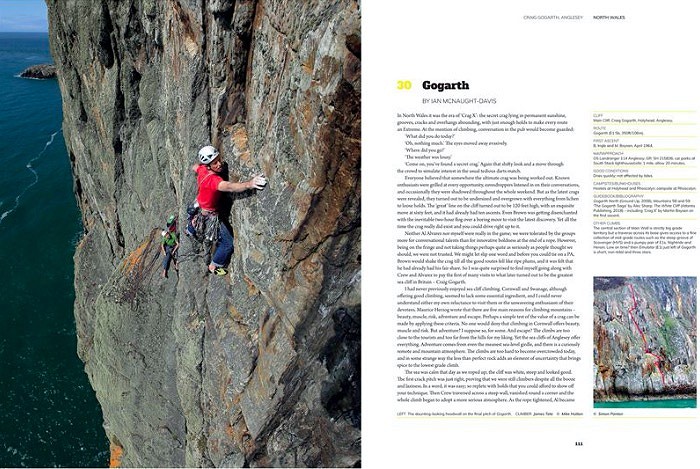
The Routes
Two routes, namely Deer Bield Buttress and North Crag Eliminate have been removed due to rockfall (and may they both rest in peace…) and two more, namely Kilnsey Main Overhang and The Scoop, have been replaced as they are now superb free climbs in their own right - hence it is no longer appropriate to peg them out. The two Lakeland routes have been replaced like-for-like with Nimrod on Dow Crag and Totalitarian on Raven Crag Thirlmere, two superb and appropriate replacements. The other inclusions are:
- Angel Face, Ben Eighe
- Vulcan Wall, Skye
- Prophecy of Drowning, Pabbay
- Plane Sailing, Stackpole Head
- Heart of Darkness/New Morning, Mowing Word
- Rock Idol & Zeppelin, Mother Carey's Kitchen
- Double Diamond & Quatermass, Lundy
- Mars & Soul Sacrifice, Swanage
By and large, each of the new additions showcases an area that was formerly unrepresented in previous editions. Within the original it felt like there was something of a bias towards mountain crags, with sea cliffs included, but certainly not in the same quantity. Swanage, despite being well developed and having several worthy routes was not held in as high regard as the likes of Gogarth, hence it didn't make the cut. Pembroke's potential was yet to be tapped and even Pat Littlejohn, a man who's name was to become synonymous with the area, was quoted saying "the area will never come to much". Finally there's Lundy, which is perhaps the most peculiar of them all as Ken was clearly a fan of the island, putting up new routes with the likes of Frank Cannings and subsequently including The Devil's Slide in Classic Rock. In Hard Rock, however, it was not to make the cut…
I think I've rambled on enough about context so let's cut to the chase: what are the new inclusions actually like? Despite not having done Angel Face, everyone I know holds it in high regard, and having climbed on the Far East Wall in winter I can attest to it being one of the most magical places I have ever had the pleasure of climbing. Vulcan Wall is another route I haven't done, but from a quick glance at the Logbooks receives rave reviews. Prophecy of Drowning is undoubtedly a classic, not just in terms the route itself, but also its remarkable and unique location. My only concern about its inclusion is that Pabbay itself is a precious and potentially fragile environment and I would hate to see that change as a result of the hoards heading there. Hopefully any individuals who do will do so with the utmost respect to the area's environment and wildlife. It is a truly special place…
Moving on to Pembroke, I must admit being surprised at the inclusion of Plane Sailing. I've never been the biggest fan of girdle traverses, as they infrequently hold sustained interest, but I do like surprises and given that this isn't a route I've personally done it gives me a good excuse to head back to Stackpole (one of Pembroke's finest, yet least climbed on cliffs) for what will likely be a memorable day out. Heart of Darkness/New Morning is another I think people will find it hard to argue with, as its quality is outstanding and positions amazing. Then it comes to Rock Idol (the world's best E1 imo…) and Zeppelin, another two that I've done several times and each time they make me smile. Lundy is an island every climber should pay a pilgrimage to and Double Diamond is one of the routes that calls out to be climbed. Quatermass is the almost opposite, insofar as lies hidden within the confines of Deep Zawn. I did the latter a few years back on a particularly damp day (poor choice, my fault…) and it certainly left an impression of adventure. These routes aren't forgettable…
And finally, Mars and Soul Sacrifice at Swanage. Mars is an interesting route who's grade has altered as the years go by, starting at HVS and eventually moving up to its current grade of E2. Considering how friendly and accessible the cliffs at Subluminal are, Black Zawn couldn't be any more different (remarkable since it's only a matter of metres away), with an atmosphere to rival even the likes of Boulder Ruckle for its badass nature.
Have they chosen the correct routes? I for one am happy. Those that I've done are great, those that I haven't I look forward to doing. In some ways it's a shame to see The Scoop go, but I can understand the decision. Firstly, it is best not to encourage further pegging on what is now a four star free climb. Secondly, it makes the list more achievable. This could be contentious, but something like The Scoop could be off-putting to potential suitors. The list in its fourth edition form is far more achievable for the modern climber, but even then it'd take a lot of time and effort. Maybe, just maybe, it'll encourage a few more folk to get out there and start ticking - irrespective of whether or not it's puerile. All that said, I am glad that they chose to include the original essay within the appendix, so that it is there for posterity.
Were I to offer a single criticism it is that the new Hard Rock does not feature a single route from Ireland. Given the universal acknowledgement of Fair Head being the best crag in the world I might have thought allowances might have been made; however, I also understand that it is a massive book - and a massive undertaking - as it is, hence opening up an entire new island's worth of routes could potentially cause the project's bindings to break under the weight.

The Writing
Re-reading the various essays in Hard Rock I am struck with how there are some I love and some I find distinctly boring, but if there is one thing I've learned during my time working for UKC it is that different things interest different people - hence having a range of different contributors is key to success. Contrary to this, I enjoyed each of the nine new essays and believe them to be some of the best written in the book. It almost made me think whether or not more could have been done to get more contemporary voices throughout the rest of the book, but it's a tough call as this would ultimately have led to a culling of some of the original writing, which - although I don't like some of it - does have an irreplaceable connection to the past which juxtaposes perfectly with the modern imagery.
Another piece of writing that is well worth seeking out is Ian Parnell's 2020 postscript, which brings Ken's original introduction on the development of hard rock climbing in Britain up to date. Ian's preface is not to be missed either, as that goes some way towards explaining his thought process behind the 4th Edition.
One thing that would have been nice to have seen - if only for the geek within me - would have been a list of the official completers (there's not many) and perhaps a copy of The Big Tick, an article written by Hard Rock's first completionist, Stephen Reid (of Needle Sports fame).
Summary
The 4th Edition of Hard Rock is something that we should all be celebrating. It would have been easy for this classic tome to have been consigned to history, but instead it's come back with a bang that will no doubt inspire future generations. Hard Rock is just as relevant today because it encourages us to explore beyond our own back yard to visit, and enjoy, climbing in other areas of our idiosyncratic little island. Ian Parnell and Vertebrate Publishing have done a superb job and I would ask that you reward them by ordering a copy - you won't regret it.
Further Reading/Watching
If you're still awake and/or interested the ultimate article in relation to Hard Rock is without doubt Stephen Reid's The Big Tick, which can be found on the Needle Sports website. Alongside this there's a range of other articles hosted on site, which will provide hours of entertainment whilst the current COVID-19 crisis passes over.
Another article worth reading is Sean Kelly's Was this the Ultimate Rock Ticklist?, which goes into the book's original impact.
The following video, produced by Hot Aches, is also well worth a watch if only to hear the thoughts of the man himself - Ken Wilson.
Hard Rock
Great British Rock Climbs from VS to E4
Compiled by Ian Parnell
Featuring over fifty crags and sixty-nine routes in England, Scotland and Wales, it epitomises all that is great about traditional climbing in Great Britain.
Ken Wilson's first edition of Hard Rock was published in 1974 and quickly established itself as the definitive representation of British rock climbing. Ken's vision for the book's format – part guidebook, part literary celebration and part coffee table visual showcase – is one that has been much copied but never equalled.
In this new edition, editor Ian Parnell has ensured Hard Rock continues to honour Ken's original concept, in particular keeping the route, not the climber, centre stage. While the activity of climbing has undergone myriad changes since 1974 – sticky rubber, camming devices, and the rise of sport climbing and indoor climbing walls – many climbers are still drawn to the drama and challenge of traditionally protected climbing. And this is why Hard Rock is still as relevant now as it was in 1974.
Stretching across the Scottish Highlands and Islands, the Lake District, the Pennines and the Peak District, North and South Wales and down to South-West England, the routes tackle big mountain walls, gritstone outcrops and epic sea cliff adventures. Focusing on the trad connoisseur's grade range of VS to E2, with additional routes at E3 and E4, the featured climbs are within reach of a majority of climbers. Timeless classics include The Bat on Ben Nevis, the Old Man of Hoy, the Central Buttress of Scafell, Cenotaph Corner on Dinas Cromlech in the Llanberis Pass, Vector at Tremadog, Right Unconquerable at Stanage Edge and Suicide Wall at Bosigran on the Cornish coast.
Alongside many of the original essays, written by a formidable cast of climbers including Pete Crew, Ed Drummond, Royal Robbins, Chris Bonington, Hamish MacInnes and Al Alvarez, this new edition features thirteen new routes and pieces by Eleanor Fuller, Stephen Reid, Kevin Howett, David Pickford, Paul Harrison, John Lawrence Holden, Martin Moran, Paul Donnithorne and Emma Alsford. It is illustrated with all-new colour photography throughout.
Hard Rock's timeless collection is sure to inspire for generations to come.



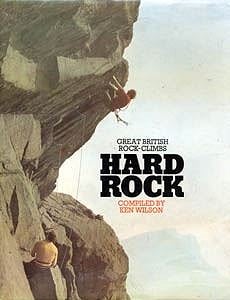
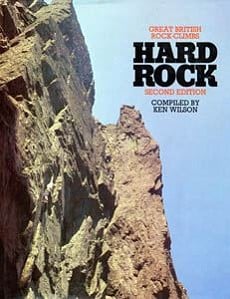









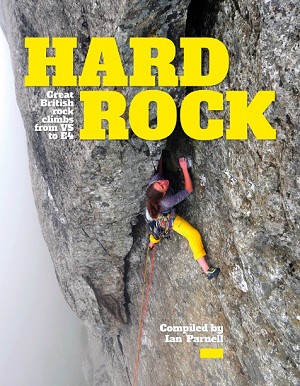










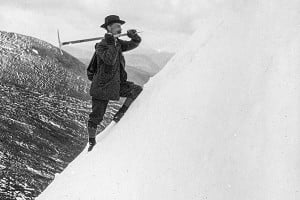



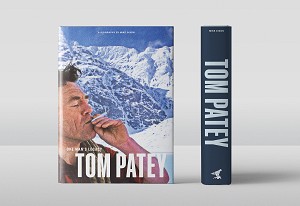


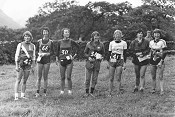

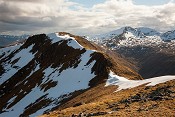

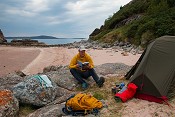
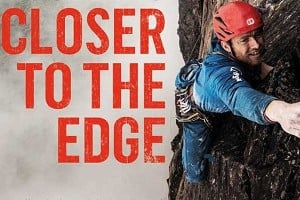


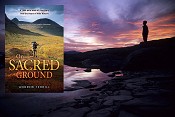
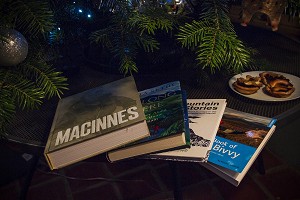
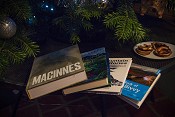




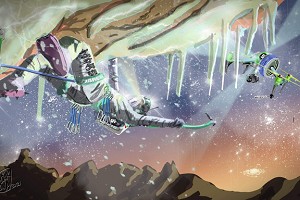

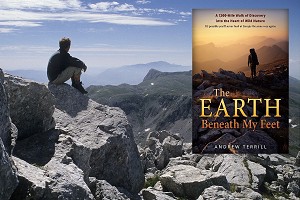
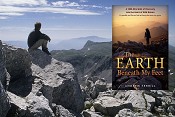
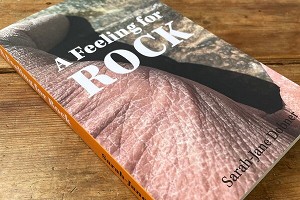
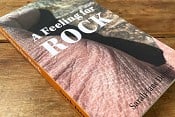
Comments
To compliment what Rob has posted, and as one who purchased the original book prior to publication, this blog post below gives some flavour of the book's original impact with climbers.
http://seansmountaincamera.blogspot.com/2018/06/was-this-ultimate-rock-tick-list.html
If anyone is struggling to get hold of a copy as your local shops are closed you can get it direct for Vertebrate Publishing, and they are doing 30% off at the moment. It could well save your sanity through lockdown, particularly if like me you've suddenly had to become a home-schooling teacher!
Thanks for sharing Sean, I really enjoyed reading that.
Would you mind if I added it to the further reading/watching section at the bottom of the review?
A great review Rob... like you, I think those involved have done a magnificent job with the new edition...
... further to Ian (Parnell's) comments about its availability... I would also like to add its available from many of the well-known outdoor retailers web-shops; all of whom could do with our support at this difficult time...
I was also thinking of writing a review of the book Rob, but you beat me to it. It's interesting to read a different take on the whole Hard Rock literature. There is also a post on the Footless Crow website, Mick Ward I think?
No problem with attaching the link to your article. I should perhaps add that the even larger format does full justice to the stunning images in the book. This unfortunately the sad fate of The Black Cliff which was too small to display the majesty of a cliff like Cloggy. Now that would be a good project for a future book!
Cheers, Sean.